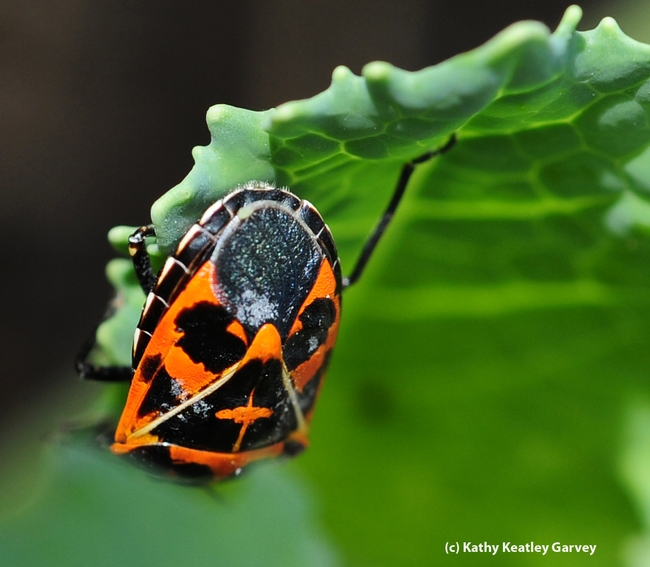Posts Tagged: Broccoli
Broccoli Success
Recently, in Late September, we harvested our first broccoli (Brassica oleracea) head of the season. It tasted so good! I planted a 4” transplant in early September and it really took off. At the same time I planted a six pack of ‘Green Comet” and as we head into the third week of October, we are picking them one by one. Of all the winter vegetables, broccoli is my favorite because it just keeps on producing. First the large center head then a week to ten days later the side shoots. The shoots get smaller and smaller with each harvest. Finally the shoots are so small they are hardly worth cooking so I just throw them into salads. A bonus of broccoli is the leaves are tasty, too. We add them to our vegetable smoothies.
The biggest problem I have encountered growing broccoli is the imported cabbage worm. When I see white butterflies with one or two spots on their wings fluttering around the garden I take heed! It is the Cabbage Butterfly (Pieris rapae) laying eggs on the underside of the leaf. Males have one spot on each wing and females have two. The larvae are little velvety-green imported cabbage worms so named because they feed on members of the cabbage family (Cruciferae), and believe me they can do lots of damage to the leaves plus get right into the heads. Over the years I have tried a number of methods to deal with the little pests. First I ignored them. That didn’t work out so well as the leaves had big holes in them and the florets harbored little green worms. I picked them out as best I could before I cooked the broccoli but occasionally I missed one and it showed up as a brown cooked worm on the plate. Yuck! My family did not appreciate them!
My second method was to pick off the eggs on the underside of the leaves. They are little yellowish bullet shaped single eggs and fairly easy to see. That was a lot of work and I missed some which left me with the same problem as method #1. So, one year I tried method #3. I used row covers to keep the butterflies out. But, a few sneaky butterflies got under the cover and had their way with my broccoli. I didn’t realize I had a problem until it was too late because I was sure my precious plants were protected and therefore didn’t check the leaves for eggs. It turned out worse than method #1or #2. Now I use method #4 and the broccoli is beautiful with minimal holes in the leaves and no little green worms in the florets or on my plate.
Method #4. I don’t like the hassle of mixing and spraying pesticides on my garden, but I have finally zeroed in on a successful method to deal with the little green caterpillar/worms. When I see the white butterflies I know the green worms will follow in three to five days and they will take two to three weeks to mature so I mix the liquid concentrate B.t. (Bacillus thuringiensis) and spray. B.t. is an organic product that I first used way back in the 70s when I started vegetable gardening (it was a powder then). I spray a very fine mist on the leaves once every 5 to 7 days while the butterflies are active. I try to be vigilant as there can be two to four generations in the spring and fall.
Here is a little secret. Use use Spray- Grip along with B.t. because the spray will not bead up and run off the leaves but will adhere to the leaves and turn them a darker green while the spray is wet so you know which plant you have covered. B.t. is a natural bacterium and needs to be used up the day it is mixed. It only kills the caterpillars or worms feeding on the plant and will not harm birds, earthworms or other beneficial insects such as honey bees and ladybugs. Plus, it can be used up to and on the day of harvest. There is only one thing that would make this method easier and that is to be able to purchase the spray pre mixed and not have to use it up each time. Well, guess what? That is exactly what is coming this spring to our nursery. That is a product I will be watching for to ensure success with broccoli.

Female Cabbage Butterfly (Pieris rapae). (photos by Libbey McKendry)

The larvae are little velvety-green imported cabbage worms.

Leaf damage when left alone.

Broccoli Success!
A Bug That's Perfect for Halloween
If there ever were a bug just perfect for Halloween, that would be the orange and black Harlequin cabbage bug, Murgantia histrionica, also...

Harlequin cabbage bug feeding on cabbage. (Photo by Kathy Keatley Garvey)

Harlequin cabbage bug crawling on cabbage leaf. (Photo by Kathy Keatley Garvey)

